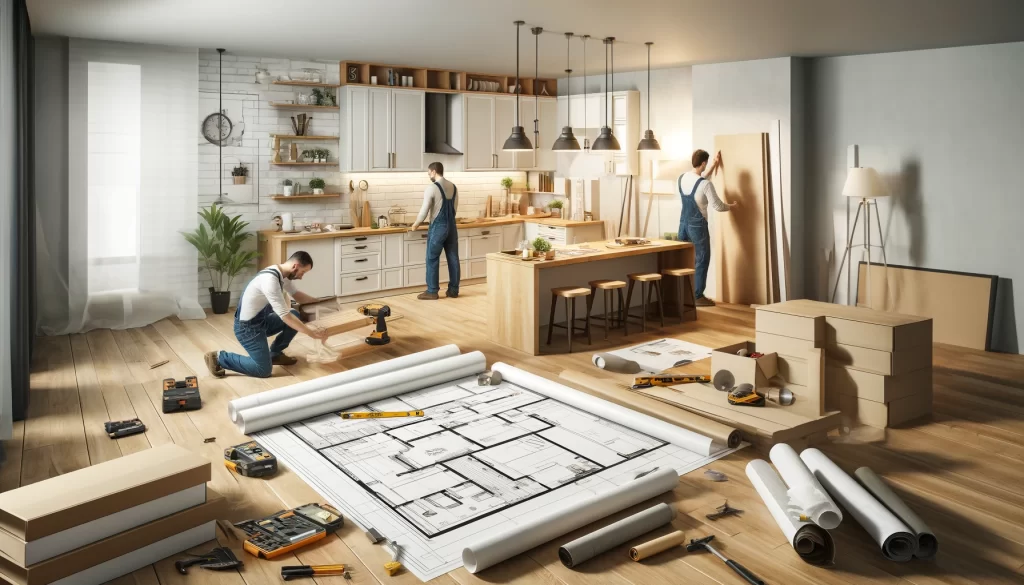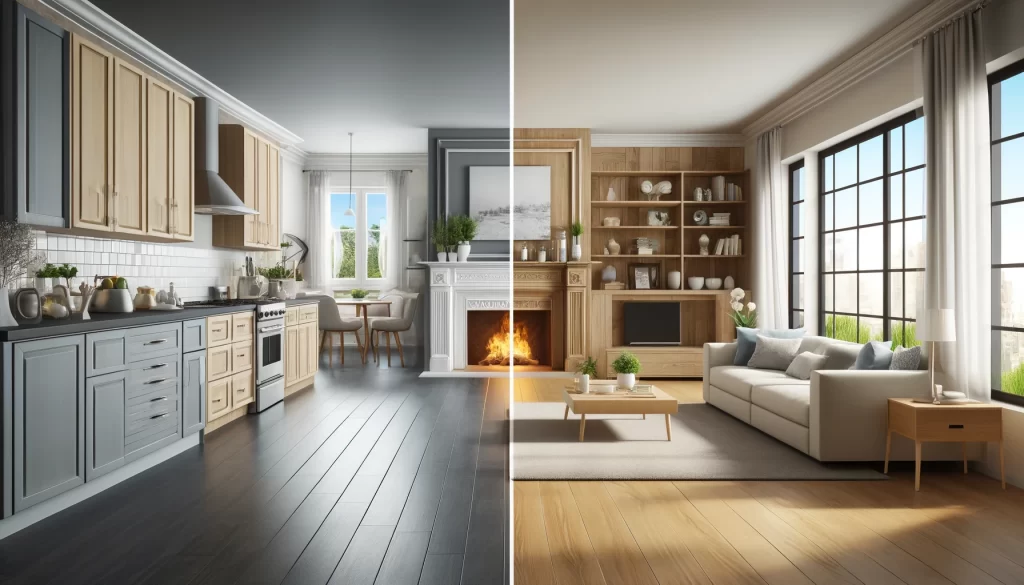
Renovating your home can be an exciting but challenging endeavor. To ensure a successful project, it’s crucial to avoid common Home renovation mistakes that can lead to increased costs, delays, and subpar results. Here’s a comprehensive guide to help you navigate your renovation journey effectively.
Table of Contents
Key Takeaways
| Common Mistake | Description |
|---|---|
| Tackling the Whole House at Once | Focus on one room at a time to avoid being overwhelmed and to keep the house marketable. |
| Inadequate Planning and Budgeting | Set a realistic budget with a contingency to avoid unexpected costs. |
| Choosing the Wrong Materials | Opt for high-quality materials to avoid higher long-term costs. |
| Ignoring Structural Issues | Address structural and safety issues before focusing on aesthetics. |
| Poor Space Planning | Effective space planning ensures functionality and practicality. |
| Overlooking Permits and Regulations | Always obtain necessary permits to avoid fines and delays. |
| Sacrificing Function for Aesthetics | Balance visual appeal with practical usability. |
| Ignoring the Natural Style of Your Home | Respect and enhance your home’s original style. |
| Not Planning for Delays | Allow for time delays in your renovation schedule. |
| Ignoring Professional Advice | Consulting professionals can provide valuable insights and avoid mistakes. |
Detailed Guide
1. Tackling the Whole House at Once
Renovating the entire house simultaneously can be overwhelming and risky. Focus on one room at a time, ensuring that each project can be completed quickly if needed, like within 30 days, to make the house marketable in case of emergencies.
2. Lack of Research
Meticulous research is essential to avoid unexpected costs and delays. Understand the scope of your project, gather quotes, and compare different materials and contractors.
3. Inadequate Planning and Budgeting
Set a realistic budget, including a contingency of at least 10-20% for unexpected expenses. Detail every aspect of the project, from materials to labor, and use tools like a home renovation budget tracker to keep track of expenses.
4. Choosing the Wrong Materials
Opting for cheap materials can lead to higher costs in the long run due to replacements and repairs. Prioritize durable, high-quality materials for critical elements like flooring, cabinetry, and structural components.
5. Ignoring Structural Issues
Before focusing on aesthetics, address any underlying structural or safety issues. Ensure that electrical systems, plumbing, and foundations are in good condition to avoid costly fixes later.
6. Poor Space Planning
Effective space planning is crucial for functionality. Consider traffic flow, the placement of doors and windows, and the “work triangle” in kitchens (between the refrigerator, sink, and stove). Proper planning ensures that the space is both practical and aesthetically pleasing.
Check out Space Planning Secrets for a Dream Living Room for more space planning tips.
7. Overlooking Permits and Regulations
Skipping permits can result in fines and having to redo work. Always check local regulations and obtain the necessary permits before starting any major renovation.
8. Sacrificing Function for Aesthetics
While trendy designs can be appealing, they may not always be practical. Focus on creating a space that balances both function and form. Consider long-term usability and maintenance when making design choices.
9. Inadequate Contractor Selection
Hiring the right contractor is vital. Don’t rush this decision. Interview multiple contractors, check their references, and ensure they understand your vision. Avoid selecting a contractor based solely on the lowest bid.
10. Failing to Order Extra Materials
Always order more materials than needed to account for mistakes and wastage. This is particularly important for flooring, tiles, and paint.
11. Not Planning for Delays
Renovations rarely go exactly as planned. Allow for time delays in your schedule to accommodate unforeseen issues like delivery delays or unexpected repairs.
12. Ignoring Professional Advice
Consulting professionals such as architects and interior designers can provide valuable insights and help avoid costly mistakes. They can offer creative solutions and ensure your renovation plans are both practical and compliant with building codes.
13. Underestimating the Importance of Lighting
Proper lighting design enhances both functionality and ambiance. Plan for a mix of general, task, and accent lighting to create a well-lit, welcoming environment.
For more on lighting design, visit Lighting Design Tips for Every Home.
14. Overbuilding
Ensure your renovation complements the existing structure and neighborhood. Overbuilding can lead to a home that feels out of place and may not provide a good return on investment.
15. Measurement Mistakes
Incorrect measurements can lead to poor fits and wasted materials. Always measure twice to ensure accuracy, especially for custom products.
16. Not Setting a Timeline
Failing to set a realistic timeline can cause unnecessary stress and delays. Plan for potential setbacks and allow extra time for unexpected issues.
17. Installing New Appliances Last
Choose your appliances early to ensure your design accommodates them, but wait to install them until the end of the project to avoid damage.
18. Focusing Solely on Appearance
Aesthetics are important, but functionality should not be compromised. Balance visual appeal with practical usability.
19. Insufficient Budget
An inadequate budget can lead to cutting corners and compromising on quality. Ensure you have enough funds to cover all aspects of the renovation, including a contingency.
20. Ignoring the Details
Small details like outlet placement, door swings, and hardware can significantly impact the functionality and aesthetics of your renovation. Pay attention to these elements during planning.
21. Not Asking for References
Always check references before hiring contractors. Speaking to previous clients can provide insights into the contractor’s reliability and quality of work.
22. Ignoring the Natural Style of Your Home
Renovations should respect and enhance the original style of your home. Ignoring the natural style can result in a disjointed look that doesn’t feel cohesive. Use materials, colors, and designs that complement your home’s architecture and history.
23. Trying to Invent New Methods
Stick to proven systems and avoid mixing incompatible building materials. Many DIYers make the mistake of trying to create new methods, which often leads to failure. Follow established guidelines and seek advice from professionals if unsure.
By avoiding these common mistakes, you can ensure a smoother, more successful renovation process that adds lasting value and enjoyment to your home. For more detailed guidance, consider consulting comprehensive renovation resources or professional advisors.
I found this YouTube video from Home RenoVision DIY and I think it is worth checking out but somehow it wasn’t embedded here so you can watch here

